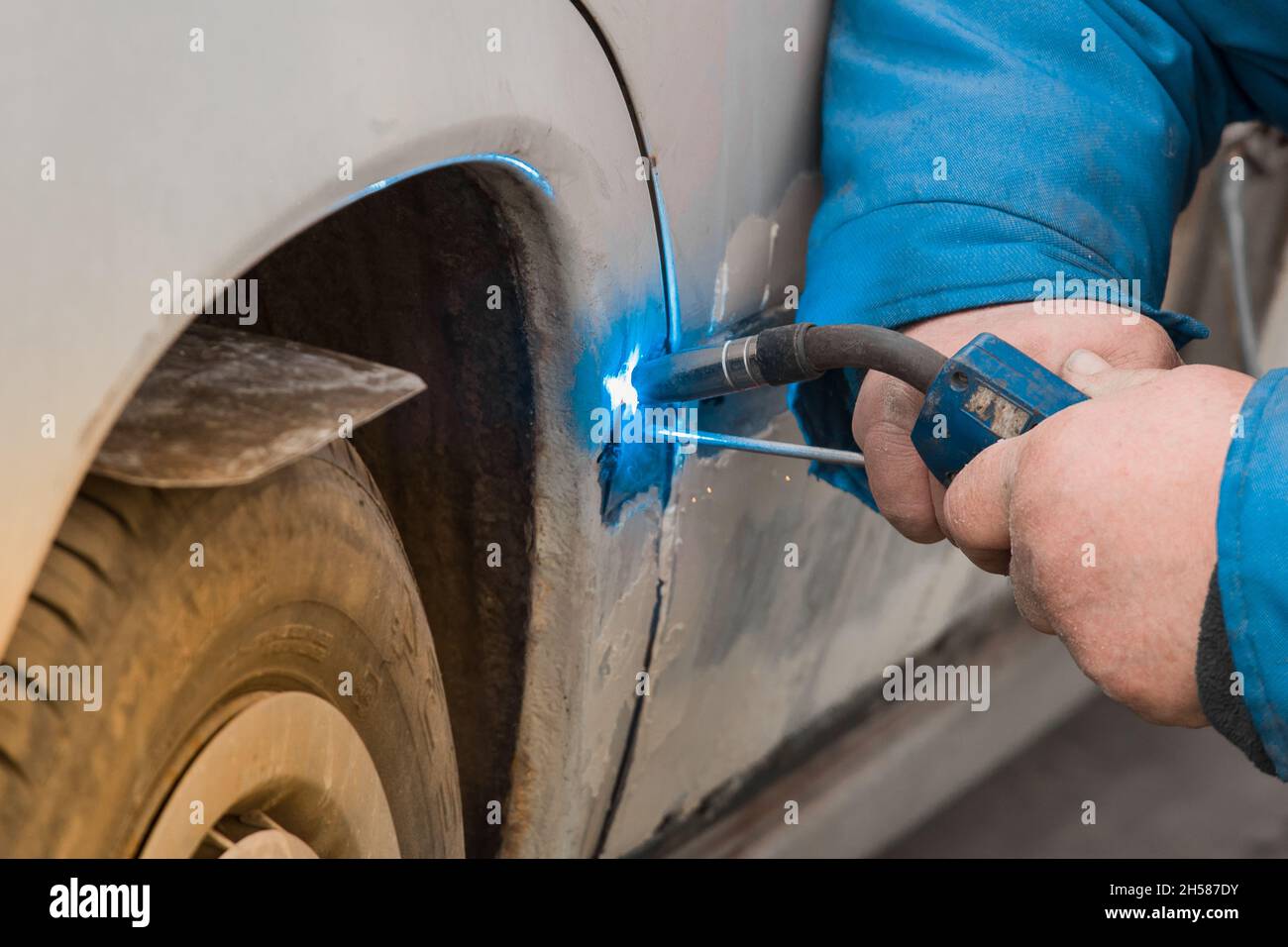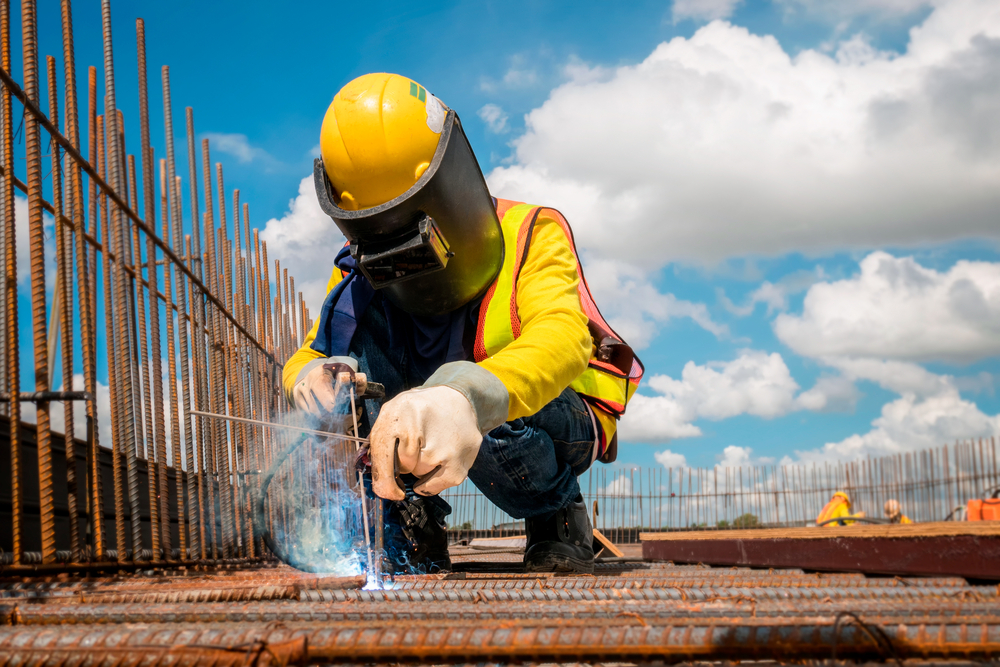Frequent causes of weld misalignment and Belgrade Fabrication’s methods
Wiki Article
Typical Welding Repair Issues and How to Address Them Successfully
Welding repair services often encounter a variety of concerns that can jeopardize the honesty of the last product. Usual problems consist of poor penetration, porosity, and misalignment, among others. Each flaw presents distinct obstacles that call for certain approaches for resolution. Comprehending these problems is vital for welders intending to boost their skills and results. This discussion will certainly check out these typical welding fixing issues and efficient approaches to address them.Insufficient Infiltration
Inadequate infiltration happens when the weld steel falls short to fully fuse with the base product, resulting in weak joints and prospective structural failings. This issue frequently originates from inadequate warm input, wrong electrode angle, or incorrect welding rate. Welders may experience poor infiltration due to a mistake of the essential specifications for a specific material density or kind. Furthermore, contamination on the base material's surface can impede efficient bonding, intensifying the problem. To attend to inadequate infiltration, welders need to ensure suitable setups on their equipment and preserve a clean job surface area. Routine examination of welds is recommended to recognize any type of deficiencies early, permitting timely corrections and the avoidance of jeopardized architectural integrity in welded settings up.Porosity
Porosity is a typical defect in bonded joints that shows up as little gas bubbles trapped within the weld steel. This issue can compromise the integrity of the weld, leading to lowered strength and possible failing under stress. Montana Mobile Welding and Repair Belgrade. Porosity generally occurs from contamination, moisture, or inappropriate welding methods, which permit gases to get away right into the molten weld pool. To deal with porosity, welders must ensure appropriate surface area preparation, preserve a clean functioning setting, and utilize suitable welding criteria. In addition, picking the appropriate filler product and protecting gas can minimize gas entrapment. Normal assessment and screening of welds can aid identify porosity early, guaranteeing timely rehabilitative activities are taken, thus protecting the quality and reliability of the welded structureMisalignment
Imbalance in welding can develop from different elements, consisting of improper setup and thermal expansion. Recognizing the origin is vital for reliable resolution. Several improvement strategies are available to straighten elements and guarantee structural stability.Reasons for Misalignment
Welding imbalance commonly stems from a variety of underlying concerns that can compromise structural integrity. One key reason is incorrect fit-up of elements before welding, which can cause spaces and unequal surfaces. Variants in thermal growth throughout the welding procedure can likewise cause distortion, especially if the materials being signed up with have various coefficients of development. In addition, inadequate clamping and fixturing might fail to hold components securely in position, causing activity throughout welding. Improperly conserved tools, consisting of welding makers and devices, might present disparities in the weld bead, additional adding to imbalance. Ultimately, driver mistake, originating from insufficient training or experience, can also play a considerable function in creating misaligned welds.Correction Strategies Offered
Addressing misalignment effectively needs a mix of corrective strategies tailored to the particular problems at hand. One typical method is making use of jigs or components to hold components in the right setting during welding, ensuring consistent alignment. In addition, pre-heating the products can help in reducing distortion and improve fit-up. For significant imbalance, mechanical realignment methods, such as using hydraulic jacks or clamps, can be used to correct the placement before welding. Post-weld heat therapy might also be needed to alleviate stress and anxieties caused by imbalance. Careful examination and modification during the configuration stage can protect against imbalance concerns from ending up being significant troubles, advertising a smoother welding procedure and improving general structural honesty.Distortion
Distortion is a common challenge in welding that can develop from numerous variables, consisting of uneven home heating and cooling. Recognizing the root causes of distortion is essential for applying reliable avoidance methods. Resolving this concern not only enhances architectural stability however additionally enhances the overall top quality of the weld.Causes of Distortion
When subjected to the intense warm of welding, products often undergo adjustments that can bring about distortion. This sensation mainly develops from thermal expansion and tightening throughout the welding procedure. As the weld area warms up, the material broadens; upon air conditioning, it contracts, which can develop inner stresses. On top of that, unequal heating across a workpiece can exacerbate these anxieties, causing warping or flexing. The sort of product also plays a substantial function; steels with differing thermal conductivity and coefficients of expansion might react in different ways, resulting in unforeseeable distortions. Poor joint layout and inadequate fixturing can contribute to misalignment throughout welding, enhancing the chance of distortion. Understanding these reasons is essential for efficient welding repair work and prevention strategies.Avoidance Techniques
Reliable prevention methods for distortion throughout welding focus on regulating warmth input and guaranteeing proper joint style. Keeping a regular warmth input assists to reduce thermal development and tightening, which can bring about distortion. Using methods such as pre-heating the workpiece can likewise minimize the temperature gradient, promoting uniform home heating. In addition, selecting proper joint designs, such as T-joints or lap joints, can improve stability and lower tension focus. Implementing appropriate fixturing to secure the work surfaces in place even more aids in maintaining placement during the welding procedure. Lastly, staggered welding sequences can disperse heat extra equally, preventing local distortion. By using these strategies, welders can substantially decrease the probability of distortion and boost the total quality of their welds.Cracking
Splitting is a typical issue encountered in welding repair services, frequently resulting from various aspects such as inappropriate air conditioning rates, material selection, or poor joint preparation. The event of fractures can substantially jeopardize the stability of the weld, leading to possible failings during procedure. To resolve this issue, welders must first evaluate the source, making sure that products work and properly picked for the details application. In addition, controlling the cooling price throughout the welding process is vital; quick air conditioning can generate tension and cause fracturing. Appropriate joint style and prep work additionally add to minimizing the threat. Applying these techniques can improve weld high quality and durability, inevitably minimizing the likelihood of breaking in completed weldments.
Insufficient Combination
A significant problem in welding repair services is incomplete combination, which takes place when the weld metal does not appropriately bond with the base material or previous weld passes Homepage - Montana Mobile Welding and Repair Welding. This flaw can lead to weaknesses in the joint, possibly compromising the integrity of the welded framework. Variables adding to incomplete combination include insufficient warm input, improper welding method, and contamination of the surface areas being signed up with. To resolve this issue efficiently, welders need to assure proper pre-weld cleaning and surface prep work, as well as change their welding criteria to accomplish sufficient penetration and blend. Regular inspection during the welding procedure can likewise help recognize insufficient fusion early, permitting prompt restorative procedures to improve the total top quality of the weldOverheating
While welding fixings can enhance architectural honesty, overheating provides a substantial obstacle that can cause product deterioration. Extreme warmth during welding can change the mechanical properties of metals, causing minimized toughness, increased brittleness, and bending. This sensation is specifically critical in high-stress applications where structural dependability is paramount. Recognizing getting too hot can involve aesthetic evaluations for staining or distortion, along with keeping track of temperature level throughout the welding procedure. To reduce the threats related to getting too hot, welders should utilize appropriate strategies, such as managing warm input, changing traveling speed, and using suitable filler products. In addition, applying pre- and post-weld warmth therapies can aid recover material homes and enhance the overall quality of the fixing, guaranteeing long-term performance and safety.Regularly Asked Questions
What Are the Typical Indications of a Welding Issue?

Exactly How Can I Test My Welds for Quality?
To evaluate welds for quality, one can utilize visual examinations, ultrasonic testing, and radiographic techniques. Each strategy assures architectural integrity, recognizes issues, and confirms adherence to specified standards, inevitably improving the reliability of the welded joints.What Safety and security Safety Measures Should I Take While Welding?
When welding, one must focus on security by wearing proper personal protective equipment, ensuring correct ventilation, protecting combustible products away, maintaining a clean work area, and knowing environments to avoid injuries and mishaps.Can I Fix a Weld Without Renovating the Entire Joint?
Repairing a weld without redesigning the entire joint is possible, relying on the damages (Belgrade Welding). Strategies such as grinding, including filler material, or utilizing a welding process can effectively address details problems while protecting the bordering frameworkWhat Devices Are Vital for Reliable Welding Repairs?
Essential tools for efficient welding repairs include a welding device, cord brush, mill, protective equipment, clamps, and filler materials. Each tool plays an important function in guaranteeing quality and security throughout the repair work process. Home Page Porosity usually occurs from contamination, dampness, or inappropriate welding techniques, which allow gases to run away right into the liquified weld swimming pool. Poorly maintained tools, consisting of welding devices and tools, may introduce inconsistencies in the weld grain, further adding to imbalance. When subjected to the intense her latest blog warmth of welding, materials commonly go through adjustments that can lead to distortion. Splitting is a typical issue experienced in welding repair work, typically resulting from different aspects such as improper air conditioning rates, material selection, or insufficient joint prep work. A significant problem in welding repair work is insufficient blend, which takes place when the weld steel does not effectively bond with the base product or previous weld passes.Report this wiki page